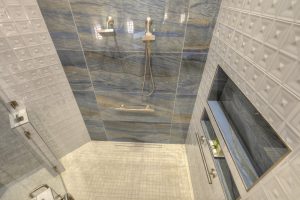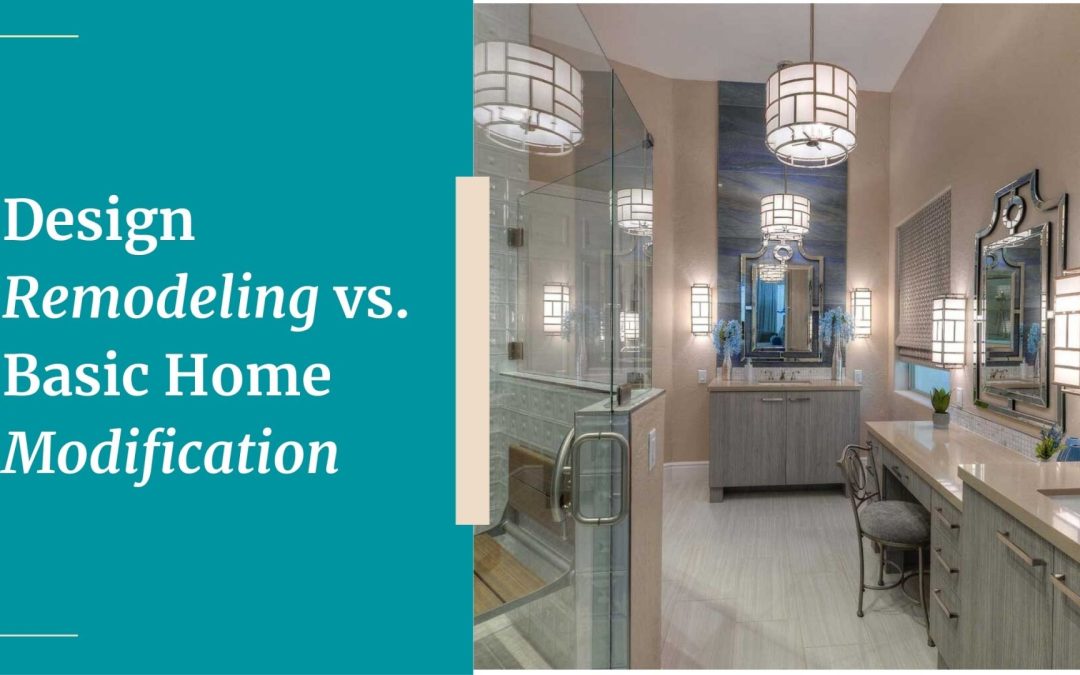Study after study shows that most baby boomers and older adults want to live out their retirement years in their own homes. he key to making that possible is aging in place remodeling—creating a home that is accessible, safe, and supportive of your changing needs, all while maintaining a sense of comfort and luxury.
While you may already be doing many things to stay healthy and age well, there’s one essential element you may have overlooked: Is your home Aging-in-Place ready?
That means remodeling your home to accommodate your naturally occurring changes, which begin around age 50, and preparing now so you can stay safely and independently in your home for years to come.
Why Aging-in-Place Remodeling Matters
It can take just one unexpected event like a fall, surgery, or sudden illness to make your current home unlivable and force a move into costly assisted or long-term care housing. When this happens, not only is the dream to remain at home shattered, it can also leave people financially unprepared for the high cost of assisted or long-term care housing.
All too often, homeowners fail to realize, or they ignore, that their home is not aging-in-place ready until it’s too late and there’s little or no time to remodel. However, between the ages of 50 and 60 is the ideal time to preventively make one’s home safe for successful and independent aging.
Design Bonus: Many of the elements of an aging-in-place-ready home can serve people of all ages well. Plus, a designed remodel can also help caregivers provide better service and make their jobs safer.
Remodeling vs. Basic Home Modifications

There is a common misconception among homeowners, contractors, and the public that simply installing grab bars qualifies as preparing your home for aging in place. While grab bars and similar basic modifications are helpful, they are not enough. These changes often react to an immediate need rather than prevent future problems.
True aging-in-place design involves remodeling. A more comprehensive and strategic approach may include:
- No-step entries and curbless showers
- Wider doorways and hallways for wheelchairs
- ADA-compliant bathrooms and kitchens
- Single-level living or first-floor suite additions
- Lever-style handles and slip-resistant surfaces
- Lighting improvements for visibility and safety
An ADA-compliant bathroom is essential for aging-in-place, particularly because most homes, historically, have not been adequately designed or built to meet the unique needs of adults aged 50-plus. A full bathroom on the first floor is especially vital for accessibility. If one doesn’t already exist, it should be added. Beyond accessibility, thoughtful bathroom remodel design plays a critical role in life safety, helping to prevent falls and ensuring the space supports independent or assisted use as needs evolve.
Design Eye-Opener: According to a Harvard Joint Center for Housing Studies report, only 1% of U.S. homes are equipped with universal design features. That’s a massive gap and a major opportunity for homeowners who want to age in place safely and stylishly.
Bathrooms Are Just the Beginning
 Bathrooms are often the first area of the home to be remodeled for aging-in-place and for good reason. They are the number one place in the home where falls and accidents occur. According to the Centers for Disease Control and Prevention, 1 out of 3 adults age 65 and older experiences a fall each year, and up to 30 percent of those falls result in moderate to severe injuries or even death. Once someone has fallen, they are two to three times more likely to fall again.
Bathrooms are often the first area of the home to be remodeled for aging-in-place and for good reason. They are the number one place in the home where falls and accidents occur. According to the Centers for Disease Control and Prevention, 1 out of 3 adults age 65 and older experiences a fall each year, and up to 30 percent of those falls result in moderate to severe injuries or even death. Once someone has fallen, they are two to three times more likely to fall again.
This growing risk begins gradually after age 50 as balance declines, often exacerbated by medications or chronic conditions. That’s why remodeling the bathroom as soon as possible as a preventive measure is a wise investment in longevity. Key design features such as curbless (no-threshold) showers, slip-resistant flooring, and abundant lighting can significantly reduce the risk of falls and support safer, more independent living.
However, true aging-in-place design doesn’t stop at the bathroom door. The rest of the home must also be evaluated and remodeled to ensure accessibility, functionality, and safety, from the entryway and kitchen to hallways, bedrooms, and beyond. While bathrooms are critical, they’re only one piece of a much larger picture of home remodeling for well-aging.
The Right Designer Makes All the Difference
To make sure that your remodel truly supports aging in place, it’s important to work with a professional trained in universal design and ADA-compliant space planning. A certified aging-in-place specialist (CAPS) with interior design expertise can:
- Evaluate and assess your current home environment
- Listen to their clients and translate their needs and wants
- Create a beautiful, functional, and accessible remodel design
- Incorporate evidence-based elements for safety and well-being
- Enhance home value and long-term livability
An expert designer’s custom plan should incorporate evidence-based design aesthetic elements that provide aging-friendly visual and psychological benefits so you can live well, independently, and confidently.
Design Bonus: The designer’s aesthetic can boost the home’s value and a return on the remodel investment because it will add to the home’s appeal and marketability rather than detract from it.
Remodeling for Longevity and Luxury
Aging-in-place remodeling is not just a smart move—it’s an investment in your future comfort, safety, and peace of mind. It ensures your home is ready for anything and allows you to enjoy your retirement your way: in style, with dignity, and in the home you love.
If you’re between the ages of 50 and 60, now is the ideal time to act. Don’t wait for a fall or injury to make changes. Remodel preventively now.
Ready to Future-Proof Your Home?
Bonnie J. Lewis is a nationally recognized Aging-in-Place Interior Designer based in Arizona. She specializes in helping boomers and seniors create stunning, functional, and accessible spaces that support independence and aging well. Schedule a complimentary consultation to explore how aging-in-place remodeling can work for you.
For more expert design tips for aging-in-place, be sure to check out the latest FREE issue of Bonnie J. Lewis’s Later Life Living magazine.

